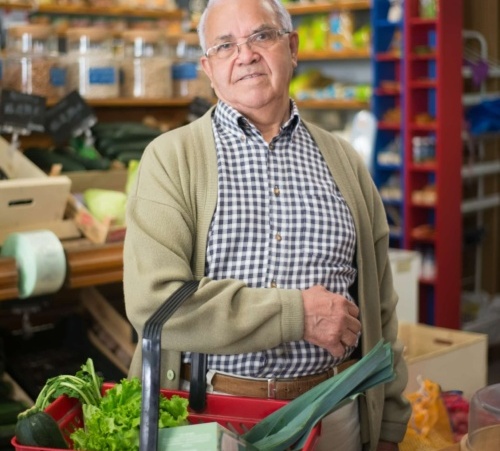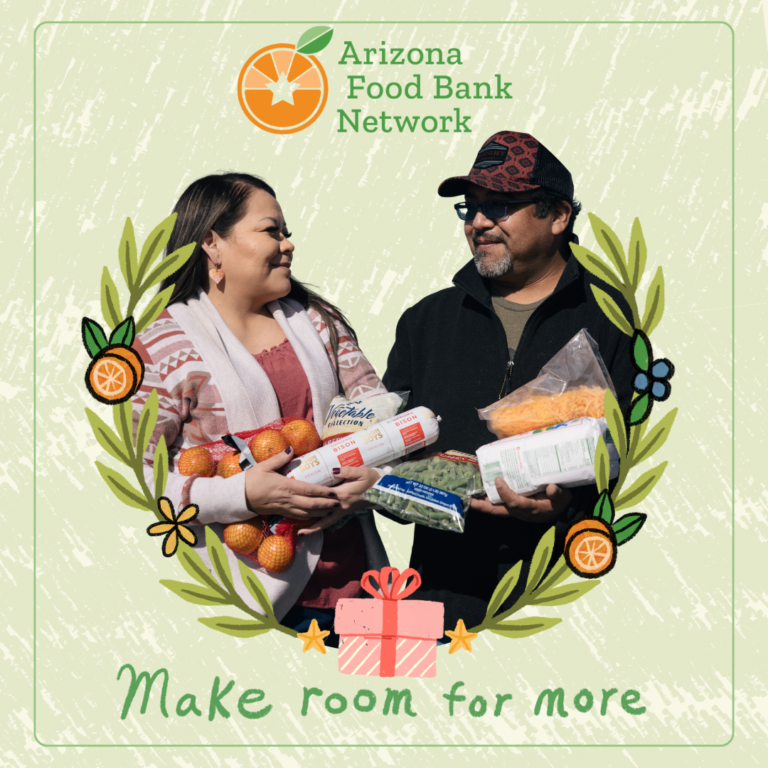According to a new report, slightly more than one in five Arizona households (20.5%) in 2011 reported not having enough money to buy food that they needed during the previous twelve months for themselves or their family. This ranks Arizona 15th worst in the country in food hardship rate for the second year in a row, and continues a trend a trend of high food hardship rates (20.8% in 2010; 20.5% in 2009; and 18.8% in 2008, the first year data was tracked). Nationally, food hardship hit 18.6% in 2011, an increase from 18.0% in 2010 and the highest rate ever recorded.
The food hardship data comes from a report released by the Food Research and Action Center (FRAC), which compiles data by state, Metropolitan Statistical Area (MSA) and Congressional District. The data reflects the current impact of the recession and economy by quantifying food hardship—the inability of a household to afford enough food for all its members at any point during the year.
Taking a closer look at food hardship by Congressional District reveals the more startling figures, with two Arizona districts ranked in the top 100 nationwide. Of those, District 4—which covers central and south Phoenix, along with much of west Phoenix—ranked the 5th worst in the country in 2010-11 with nearly one third of residents suffering from food hardship (31.8%), a huge jump from 40th (25.3%) in 2009-10. This dramatic increase highlights the hunger struggle in our large urban areas, where high poverty, unemployment and food deserts conspire to give residents fewer options to feed their families. District 7, which includes Yuma and much of southwestern Arizona, ranked 88th with a 22.7% food hardship rate, the same ranking it held in 2009-10. Complete Congressional District rankings:
| DISTRICT | REPRESENTATIVE | 2010-11 FOOD HARDSHIP RATE | NATIONAL RANK | 2009-10 FOOD HARDSHIP RATE | NATIONAL RANK |
| 1 | Paul Gosar | 21.1% | 120 | 24.0% | 60 |
| 2 | Trent Franks | 16.7% | 266 | 18.3% | 231 |
| 3 | Ben Quayle | 20.0% | 161 | 18.9% | 212 |
| 4 | Ed Pastor | 31.8% | 5 | 25.3% | 40 |
| 5 | David Schweikert | 12.7% | 378 | 11.9% | 394 |
| 6 | Jeff Flake | 15.6% | 302 | 17.0% | 278 |
| 7 | Raúl Grijalva | 22.7% | 88 | 22.5% | 88 |
| 8 | Vacant (Giffords) | 15.7% | 297 | 15.3% | 314 |
The Tucson MSA fared a bit better, as the food hardship rate for all households was an even 18.0% in 2010-11, ranking 50th out of the 100 largest MSAs. In 2009-10, the Tucson MSA had a 19.4% food insecurity rate and an 18.8% food hardship rate the year before in 2008-09.
The FRAC report analyzes survey data collected by Gallup. The ability to provide such localized data and such up-to-date data comes from Gallup’s partnership with Healthways, interviewing 1,000 households per day almost every day since January 2, 2008 as part of the Gallup-Healthways Well-Being Index project. For this report, more than 352,000 people were asked in 2010 whether there were times over the preceding year that they did not have enough money to buy food they or their family needed. Click here to read the full report.
The Gallup survey question on food hardship is very similar to one posed by the Census Bureau and analyzed by the U.S. Department of Agriculture in its official measure of food insecurity, but because of sample size, Gallup provides a closer, more localized and more recent look at food hardship. Official government data on food insecurity have a nearly one-year time lag and do not go below the state level.

